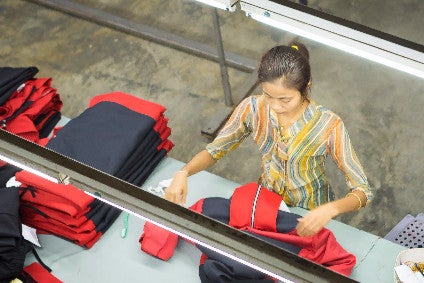
The Myanmar Government has set out plans to increase the country’s minimum wage rate by 33% across all regions – a move the garment sector suggests could put pressure on its business owners.
The National Tripartite Committee on the Minimum Wage has proposed an increase in the rate to MMK4,800 (US$3.53) per day, from MMK3,600 currently. It will be applied across all regions and states to all businesses with ten or more workers.
The announcement was made on 29 December and is expected to take effect from the beginning of March. A 60-day period for public comment is now underway.
The decision was made following a review by the Committee into wage rates, GDP, inflation rates in neighbouring countries, views from experts, and the attitudes of employers and employees.
Employer representatives, however, claim the rate increase is too high, while labour representatives say it is too low.
SMART Myanmar – an EU-funded initiative aimed at promoting ‘Made in Myanmar’ garments and sustainable practices – says the increase is on the lower end of the range anticipated by industry analysts and observers.

US Tariffs are shifting - will you react or anticipate?
Don’t let policy changes catch you off guard. Stay proactive with real-time data and expert analysis.
By GlobalData“It is much lower than the 55% increase advocated by several unions,” the industry body said. “Nevertheless, factory owners consider a 33% increase difficult to bear. Myanmar law requires 200% wage rates for overtime hours, which is a higher percentage than any other country in Southeast Asia.”
Employer representative Khaing Khaing Nwe opposed the decision, telling news publication Eleven Myanmar the increase will be a “heavy burden” for employers.
“Employers already suffer from other heavy burdens such as high tax rates, transportation costs and bank interest rates. We officially oppose this decision and are unable to pay this rate.”
While employee representative Naw Aung told the publication of his disappointment at the increase: “Workers may not be satisfied with this decision as the new rate doesn’t meet their expectations. We have submitted a proposal to pay 5% of salary as an increment and expert fee.
“We will monitor the committee’s decision. We will continue speaking up based on the responses from the labour federation and workers.”
Research carried out by the International Labour Organization (ILO) into the Asia-Pacific Garment and Footwear Sector, published in November, found that while wages in developing Asia’s garment and footwear industry have increased in recent years, they continue to remain low overall – particularly for women.
The ILO estimates that average earnings were less than US$200 per month in eight of the 12 countries with available data.
At the high end, nominal average wages in China and Thailand were $582 and $267, respectively. By contrast, nominal average wages for workers in the garment, textile and footwear sector were only about $100 a month in Cambodia, Lao People’s Democratic Republic and Myanmar at the time of the most recent labour force surveys.




